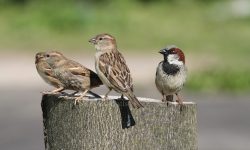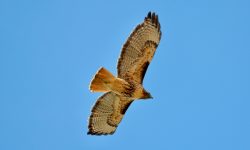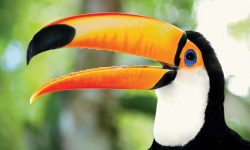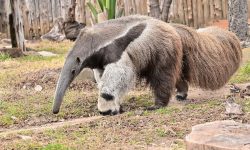When you glance up and see birds soaring in a V-formation across the sky, you’re witnessing one of nature’s most efficient team strategies. But have you ever noticed that the V isn’t always symmetrical? In many cases, one side is longer than the other. Why is that? Let’s explore the science behind this fascinating behavior and the mystery of the uneven V.

The V Formation: A Masterpiece of Aerodynamic Efficiency
Harnessing Airflow to Minimize Energy Expenditure
Birds flying in a V formation strategically exploit the complex airflow generated by each wingbeat. As a bird flaps its wings, it creates an upwash—an upward-moving column of air trailing slightly behind and to the side. This upwash forms pockets of reduced air pressure that trailing birds can position themselves within, significantly reducing aerodynamic drag. By riding these pockets, following birds expend less muscular energy, allowing them to glide more efficiently. This energy-saving mechanism, called aerodynamic drafting, enhances the endurance of the entire flock, especially during long migratory journeys.
Precision in Wingbeat Synchronization Enhances Lift
Advanced research employing GPS tracking and motion sensors has revealed that birds flying in a V formation meticulously coordinate their wingbeats. This synchronization ensures that the trailing birds flap their wings in harmony with the updraft patterns generated by the leaders, thereby maximizing lift and minimizing drag. Such biomechanical harmony is especially vital for migratory species—like geese and pelicans—that undertake extensive journeys spanning thousands of kilometers. Through this cooperative flight pattern, the flock effectively functions as a highly efficient, energy-saving aerial unit.
Why Is One Side of the V Often Longer?
Asymmetry in V-Formations: A Natural and Functional Phenomenon
While we often picture the V formation as perfectly symmetrical, detailed field observations reveal that one wing of the V frequently extends farther than the other. This asymmetry is not a random anomaly but likely a reflection of complex flock dynamics and adaptive positioning strategies that optimize flight efficiency and social structure within the group.
Individual Variability: Flight Skill, Dominance, and Orientation
Each bird selects its position within the V based on a delicate balance of minimizing energy expenditure, maintaining clear lines of sight, and ensuring safety from predators. Preferences for either side can be influenced by factors such as dominance hierarchies, individual flight strength, or lateralized vision (favoring one eye). The uneven shape often emerges as stronger or more experienced birds take extended turns leading on one side, while less skilled or younger birds cluster in positions offering more aerodynamic advantage or visual comfort. This dynamic positioning ensures that the flock maintains cohesion and maximizes collective endurance.
Leadership Rotation and Energy Sharing
Taking Turns at the Front: The Grueling Lead Position
The bird at the forefront of the V formation faces the greatest aerodynamic challenge, plowing through undisturbed air without the benefit of uplift from another’s wingbeats. This position demands significantly more energy and muscle power. To combat fatigue, flocks exhibit a remarkable behavior known as leadership rotation, where individuals cyclically take turns leading before moving back into less demanding positions within the formation. This cooperative energy sharing allows the group to maintain endurance over long migratory flights.
Dynamic Shifts in Formation Shape
As birds rotate leadership and adjust their positions, the shape of the V formation naturally fluctuates. These positional changes can cause one wing of the V to elongate temporarily, especially in larger flocks where complex social interactions influence spacing. External factors such as wind direction and topographical features can also impact formation symmetry, pushing birds to shift laterally to maintain optimal flight conditions. This fluidity in formation shape is a testament to the birds’ adaptive coordination and collective energy management.
Vision and Communication Advantages
Enhanced Field of View for Effective Coordination
Flying in a V formation not only improves aerodynamic efficiency but also provides each bird with an unobstructed line of sight to its flock mates. This clear visual access is crucial for maintaining synchrony and enables birds to monitor the movements and signals of neighbors. When more birds gather on one side, it can create a broader visual corridor, facilitating better communication and early detection of potential threats approaching from that direction.
Sustaining Group Cohesion Through Visual Contact
For large migratory flocks, constant visual connection is vital to preserving formation integrity. If birds on one side drift slightly farther from the leader, the V formation may elongate unevenly as other members adjust their positions to maintain proximity and coordination. This dynamic balancing act involves fine-tuned adjustments in spacing, flight speed, and visual awareness to ensure the group moves as a unified, cohesive unit.
Environmental Factors That Affect the V Shape
Impact of Wind and Weather on Formation Symmetry
External environmental forces such as crosswinds, thermal updrafts, and sudden gusts can exert lateral pressure on the flock, pushing one wing of the V formation outward and disrupting its balance. Birds continuously adjust their positions and wingbeats in real-time to compensate for these changing conditions, striving to maintain optimal lift and clear communication channels despite the challenges posed by the weather.
Navigating Migration Paths and Terrain Landmarks
During migration, birds often encounter geographic features like coastlines, mountain ranges, or urban structures that influence their flight path. To safely navigate these obstacles or follow natural landmarks, flocks may skew one side of the V formation, resulting in an asymmetrical shape. This adaptive behavior ensures safe passage while preserving aerodynamic benefits throughout different phases of their journey.
What Species Use the V Formation?
Migratory Waterfowl and Large Birds: Masters of Formation Flight
The iconic V formation is predominantly observed in large migratory birds such as Canada Geese, pelicans, ibises, cranes, and swans. These species undertake extensive long-distance migrations, and flying in a structured V allows them to significantly reduce individual energy expenditure. By capitalizing on aerodynamic advantages and coordinated group dynamics, these birds enhance endurance and navigational efficiency during their arduous journeys.
Species That Typically Do Not Use V Formations
In contrast, many smaller birds like songbirds, raptors, and species with irregular flight patterns rarely adopt the V formation. Their shorter migration distances, varied wing morphologies, and often solitary or loosely grouped behaviors mean that alternative flight strategies—such as flocking in clusters or solitary travel—better suit their ecological needs and flight mechanics.
Conclusion: A Natural System of Efficiency and Adaptation
The uneven V in bird flight isn’t a mistake or malfunction—it’s a dynamic, adaptive solution shaped by aerodynamics, communication, leadership, and environment. Whether it’s due to rotating roles, wind resistance, or personal preferences among flock members, the longer side of the V shows us that nature values flexibility over perfection.
Next time you see a V of birds in the sky, take a closer look—you might just witness one of the most elegant, energy-saving teamwork strategies on the planet, tailored in real-time by instinct and intelligence.






